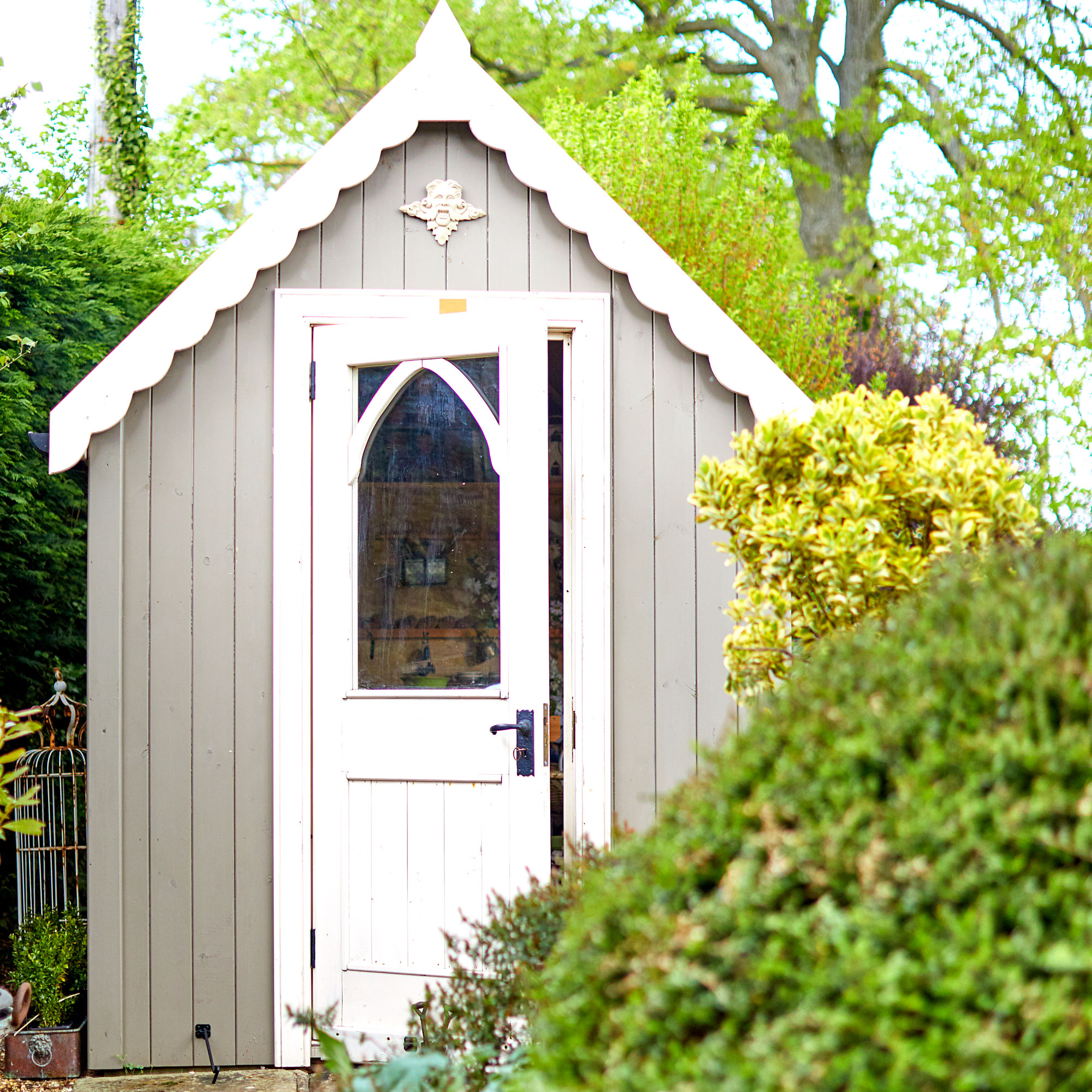5 ways to insulate a shed for free
Save energy - and money - with these canny tips on how to insulate a shed for free
Looking to save some cash? We have found a whole host of savvy ways to insulate a shed for free. The cost of living crisis is uppermost in our minds and many of us are looking at how to save money and energy, even in our humble garden sheds.
You may have already considered the best ways to insulate your home on a budget. But if you’ve not thought about how to insulate a shed on a budget, we are here to help.
‘Those of us that spend a lot of time in our sheds, creating, working, relaxing or pottering, know how cold they can get in the winter. They can also get stifling in the summer,’ says Jenny Davis, Forest Garden. ‘Insulating your wooden hideaway stops temperatures from fluctuating. This prevents condensation, damp and potential creature infestations. Using what you have around the house is a brilliant, cost-effective way to insulate a shed for free.’
Ways to insulate your shed for free

1. Make sure it’s waterproof
The best way to protect your shed and the things inside it is to make sure rain and damp can’t get in. ‘Check for any holes or missing seals around your shed door and windows where the warmth could escape,’ says Tony Kersey, Homebase's Buying Manager. ‘Your shed roof can also make it draughty. Check that everything is still in place and nail any loose parts down.’
‘Seal any gaps by treating the walls with a wood-based sealant,’ says Nathan Hyatt-Mitchell, a Rated People builder. ‘This will prevent moisture and wind from entering the shed. It’s important to insulate a shed to protect the things of value that you keep inside. You could save the cost of replacing items at a later date.
Good ventilation is also important for most average-sized sheds, so install one or two vents. If you don’t want to spend anything, leave the shed windows or door open regularly while you’re at home.’
2. Insulate your shed walls with bubble wrap
If you’ve bought any large items, save the bubble wrap as it can be used as insulation. If you don’t have enough, it’s possible to buy 20-metre rolls for under £15 on Amazon. It’s a small outlay when you consider the value of the tools and equipment usually stored in a shed.
Sign up to our newsletter for style inspiration, real homes, project and garden advice and shopping know-how
‘Measure the shed panels and cut the bubble wrap to size to fit over each post on the shed’s framework,’ says B&Q's Category Planner James Benfield. ‘Use a staple gun to attach the bubble wrap to the framing. Don’t staple or tack the bubble wrap directly to the cladding because there needs to be an air gap to prevent damp problems.’
3. Collect cardboard boxes for lining shed walls

It’s worth keeping cardboard boxes to use as free insulation. The air pockets between the layers of corrugated cardboard make it a great insulator.
‘Staple or tack cardboard to the walls and you’ll achieve a good level of insulation,’ says Jenny Davis, Forest Garden. ‘Although remember, investing in the future of your shed means that you’ll save time and money in the long term.’
It’s also worth bearing in mind that small furry things also find cardboard warm too, so it’s best used for the roof and walls, rather than the floor. If you use it and see at a later date that it’s been chewed, it can be an indication of vermin. Cardboard is also porous and will soak up water so ensure any gaps in the shed structure are sealed to avert any leaks or damp problems.
4. Use leftover loft or floor insulation
After doing a loft insulation, most of us have an extra roll or two lying around, as we tend to buy too much of what we need (no one wants a dash to the DIY shop midway through a job). If you’re nodding at this, find out how to insulate a shed and make use of those leftover rolls. If you only have a small amount, it’s worth just insulating the pitched roof.
According to Garden Buildings Direct, around 40% of shed heat loss is through the roofing. ‘Fiberglass insulation isn’t a rigid product, so be mindful that over time, it will gradually lose shape and slump down, particularly if it’s used vertically,’ says Insulation Superstore’s Rosie Milner.
5. Place an old carpet or rug on the floor

Extend the life of an old carpet, offcut or seen-better-days rug by using it to insulate the floor of your shed. Not only will you be repurposing it and adding a layer of insulation to the floor, but it’ll also be more comfortable to walk on than the hard surface.
Be mindful that your shed is on a flat, level base, so water isn’t able to puddle below. If there isn’t sufficient airflow beneath it, it may be necessary to include a breathable membrane between the floor and carpet to prevent damp penetration.
Jacky Parker is a freelance interiors & lifestyle journalist, specialising in modern interiors, design and eco living. She has written for Future’s interior magazines and websites including Livingetc, Homes & Gardens, Country Homes & Interiors and Ideal Home for over fifteen years, both as a freelance contributor and inhouse, with stints as Acting Digital Editor, Livingetc and Acting Style Content Editor, Country Homes & Interiors. Her work also features in national and international publications including Sunday Times Style, Telegraph Stella, The Guardian, Grand Designs, House Beautiful and more. With years of experience in the industry Jacky is privy to the insider view and the go-to places for interior inspiration and design-savvy décor.